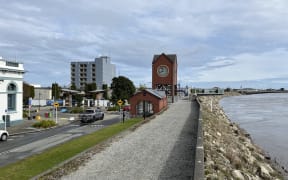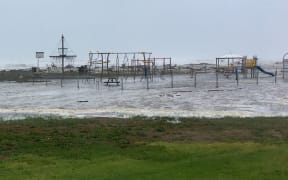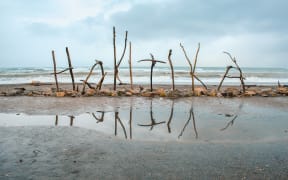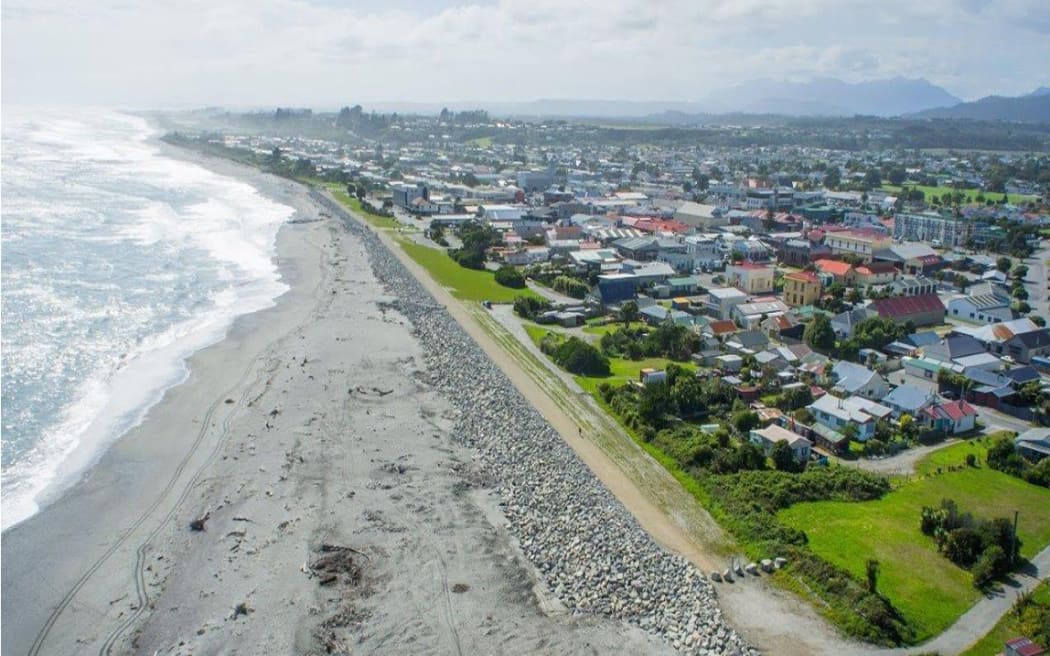
A drone view of the existing Hokitika seawall, with the proposed extension to stretch northward of the Hokitika town centre, middle. Photo: West Coast Regional Council via LDR
The $2.8 million Hokitika seawall extension is being reviewed line by line by the West Coast Regional Council to justify the 'shovel ready' funding it has already received from the government - amidst calls to abandon the scheme.

The Hokitika Joint Seawall Committee met on Friday afternoon to hear an update from the West Coast Regional Council.
With just one week left until polling day, the five candidates for the Hokitika mayoralty and any new Westland candidates for the regional and district councils were conspicuous by their absence.
The meeting came months after the previous staff leaders for the seawall extension quit the regional council. It has since hired an external contractor to pick up management of the Hokitika project, as well as several other infrastructure projects on the books.
Talk on Friday circled around justification for the seawall extension behind residential areas of Revell Street - currently based on a 10 to 15-year design life - and separately, addressing the risk of the Hokitika River flooding the town.
The entire town centre is mapped as a coastal hazard zone within the new combined district plan, the Te Tai o Poutini Plan.
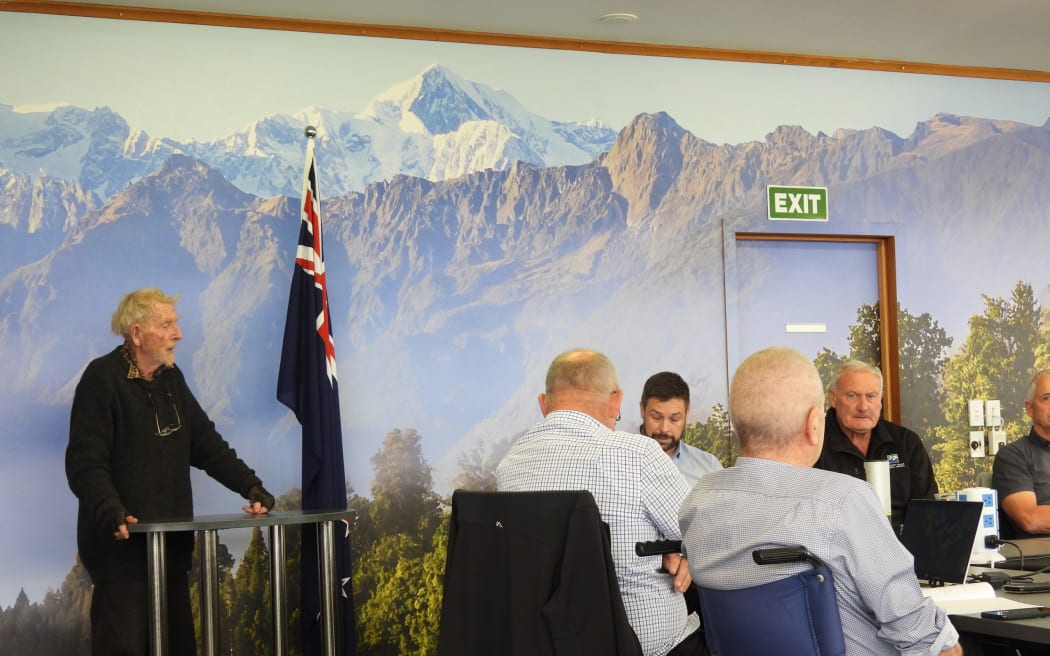
Max Dowell presents to the Hokitika Seawall Committee at the Westland District Council chambers on Friday afternoon. Photo: Greymouth Star / Brendon McMahon via LDR
Hokitika octogenarian Max Dowell, in a pithy presentation and noting his "bloody common sense" credentials, said the current gravel dump from the river mouth pushing north on to the beach, negated any need for the seawall.
"The whitebaiters are fishing on the gravel outside the Hokitika River bar - almost a kilometre further out than what the protection walls are. This is because the 6 million tonnes estimated to come down from the Hokitika River basin, fed by five rivers, and it's because the Hokitika River has straightened itself from the Kaniere Bridge down and running through the middle channel," Dowell said.
"The north spit is not collecting it. It's running straight out to sea and it's dumping the gravel. And each of the southwesterlies are putting it back on to our beach rapidly.
"You've only got to glance at the beach to know that the beach is building back up - it's covered with driftwood."
Hokitika Seawall Alliance chairman Mark Mellsop-Melsen called for the seawall funding to instead be redistributed towards future coastal erosion adaptation.
"The continuation of this seawall is irresponsible and a waste of our money," he said.
"I understand the council has funding for this particular project. A request should be made to government to have this funding redistributed for better uses."
Regional council chief executive Heather Mabin, in reply to questions about the current 10 to 15-year design life of the seawall project, said the longer term conversation about the bigger picture for Hokitika had to start.
"At the moment it has been focused on the current project," Mabin said.
In this context, while the proposed Westport scheme incorporated protection walls, it also had to address the longer term "adaptation" and coastal retreat options, she said.
Councillor Stuart Challenger said the challenge was gaining acceptance in the community for "the bigger picture" options.
He pointed out how quickly local knowledge about risk "disappears" including how, 25 years ago, the Westland District Council was not issuing building consents in parts of central Hokitika due to the known coastal hazard incursion risk.
"It somehow got turned over."
Regional council infrastructure project leader Scott Hoare said the seawall extension consent process was now awaiting a cultural impact assessment.
"At this stage we support public notification ... obviously we'll need to get affected party approval."
The design life of the proposed wall, construction of it and the timeline for the project was all under review to satisfy government criteria.
Price also had to be "tested" against the local market, "and whether that fits within the funding that is available".
"We're going through a process that the costs that are put there can be approved as a spend," he said.
The regional council had spent about $100,000 to date, including design and anticipated consents.
Local Democracy Reporting is Public Interest Journalism funded through NZ On Air
